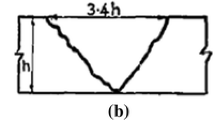Abstract
This paper describes a rigorous and systematic hazard analysis, called infection modes and effects analysis (named after its industrial counterpart failure modes and effect analysis (FMEA)), which was used to investigate the potential spread of marine organisms by human vectors. The analysis was conducted using small craft as a model system and implemented through nine workshops targeted at owners and operators of fishing vessels, motor cruisers, yachts and trailerable boats, operating out of local ports in southeastern Australia. It identified seven vessel components, divided into various sub-components, and eight infection modes. Each sub-component/infection mode combination represents a possible vector for the spread of marine organisms. The analysis identified a total of 215 sub-component/infection mode combinations for displacement vessels and a further 71 combinations for trailerable vessels, which were then prioritised. Water retention and internal fouling of seawater and grey water inlets, internal fouling of sonar tubes and water (and sediment) retention in sewage holding tanks were identified as the main vectors of a displacement vessel. The burley bucket and water (and sediment) retention in the anchor well and bilge pump were identified as the main vectors of a trailerable vessel. This is the first time that FMEA, or a variant of it, has been applied to biological invasions. The analysis demonstrates that rigorous hazard identification techniques, originally designed for complex industrial systems, can be modified for use in ecological systems.
Similar content being viewed by others
References
Baltz DM (1991) Introduced fishes in marine systems and inland seas. Biological Conservation 56: 151–177
Carlton JT (1985) Transoceanic and interoceanic dispersal of coastal marine organisms: The biology of ballast water. Oceanography and Marine Biology: an Annual Review 23: 313–371
Carlton JT (1995) Biological invasions and cryptogenic species. Ecology 77(6): 1653–1655
Carlton JT (2001) Introduced Species in US Coastal Waters: Environmental Impacts and Management Priorities. Pew Oceans Commission, Arlington, Virginia, 30 pp
Cohen AN and Carlton JT (1995) Biological Study: Non-Indigenous Aquatic Species in a United States Estuary: a Case Study of the Biological Invasions of the San Francisco Bay and Delta. US Fisheries and Wildlife and National Sea Grant College Program Report, NTIS Number PB96–166525, Springfield, Virginia, 273 pp
Cranfield HJ, Gordon DP, Willan RC, Marshall BA, Battershill CN, Francis MP, Nelson WA, Glasby CJ and Read GB (1998) Adventive Marine Species in New Zealand. NIWA Technical Report 34, National Institute of Water and Atmospheric Research, Wellington, New Zealand, 48 pp
Hayes KR(2002) Identifying hazards in complex ecological systems. Part 1: fault-tree analysis for biological invasions. Biological Invasions 4(3): 235–249 (this issue)
Hope S, Bjordal EN, DiackHM,EddershawBW, JoannyL, Ortone G, Payne FG, Searson AH, Sedlacek KW and Strien W (1982) Methodologies for Hazard Analysis and Risk Assessment in the Petroleum Refining and Storage Industry. CONCAWE Report 10/82, CONCAWE, The Hague, The Netherlands, 96 pp
Johnson LE and Padilla DK (1996) Geographic spread of exotic species: ecological lessons and opportunities from the invasion of the zebra mussel Dreissena polymorpha. Biological Conservation 78: 23–33
Johnson LE, Ricciardi A and Carlton JT (2001) Overland dispersal of aquatic invasive species: a risk assessment of transient recreational boating. Ecological Applications 11(6): 1789–1799
McDermott RE, Mikulak RJ and Beauregard MR (1996) The Basics of FMEA. Quality Resources, New York
Ozog H and Bendixen LM (1987) Hazard identification and quantification. Chemical Engineering Progress (April): 55–64
Palady P (1995) Failure Modes and Effects Analysis: predicting and Preventing Problems before They Occur. PT Publications, Palm Beach, Florida
Royal Commission on Environmental Pollution (1991) GENHAZ: A System for the Critical Appraisal of Proposal to Release Genetically Modified Organisms into the Environment. HMSO, London, 55 pp
Thresher RE, Hewitt CL and Campbell ML (1999) Synthesis: Introduced and cryptogenic species. In: Hewitt CL, Campbell ML, Thresher RE and Martin RB (eds) Marine Biological Invasions of Port Phillip Bay, Victoria. CRIMP Technical Report 20, pp 283–295. CSIRO Division of Marine Research, Hobart, Australia
Walford L and Wicklund R (1973) Contribution to a World Wide Inventory of Exotic Marine and Anadromous Organisms. Fisheries Technical Paper No. 121, Food and Agricultural Organisation, Rome, 49 pp
Willan RC, Russel BC, Murfet NB, Moore KL, McEnnulty FR, Horner SK, Hewitt CL, Dally GM, Campbell ML and Bourke ST (2000) Outbreak of Mytilopsis sallei (Recluz, 1849) (Bivalvia: Dreissenidae) in Australia. Molluscan Research 20(2): 25–30
Author information
Authors and Affiliations
Rights and permissions
About this article
Cite this article
Hayes, K.R. Identifying Hazards in Complex Ecological Systems. Part 2: Infection Modes and Effects Analysis for Biological Invasions. Biological Invasions 4, 251–261 (2002). https://doi.org/10.1023/A:1020943231291
Issue Date:
DOI: https://doi.org/10.1023/A:1020943231291




